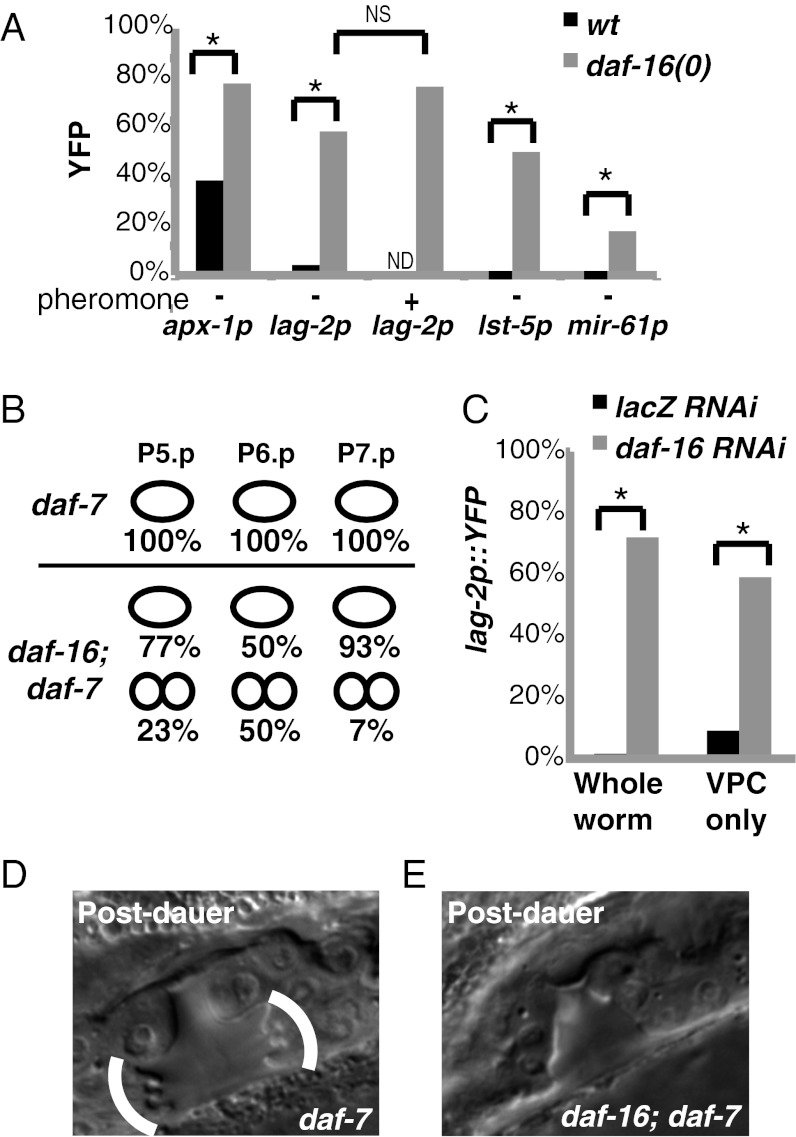Fig. 5.
daf-16 promotes cell-fate plasticity in dauer larvae. (A) Percentage of dauer larvae expressing lag-2p::yfp in P6.p at 25 °C. daf-7(e1372) is present in all strains (“+” indicates exogenous pheromone was present; n = 17–71). (B) Percentage of the indicated VPCs that have divided one or more rounds in dauer larvae (n = 30). These divisions occur during dauer because they are never observed at the L2d-Dauer molt (0/29). (C) “Whole worm”: daf-7(e1372) lag-2p::yfp larvae were subject to RNAi for either lacZ (control) or daf-16 (n = 43–63). RNAi works efficiently in all nonneuronal tissues because these larvae are wild-type for rde-1 (25, 46, 47). “VPC only”: daf-7 lag-2p::yfp; rde-1(0); lin-31p::RDE-1 larvae were subject to RNAi for either lacZ (control) or daf-16 (n = 22). These larvae are unable to carry out RNAi in any tissue except the VPCs where lin-31p drives expression of rde-1 (indicated by “VPC only”) (15, 45, 48). (D) A total of 33/33 daf-7 postdauer L4 larvae displayed normal vulval morphology including the characteristic “Christmas-tree” structure (bracketed in image). In addition, normal vulval morphology was observed in 13/13 daf-16 larvae grown continuously. By contrast, 13/15 postdauer daf-16(0); daf-7 larvae displayed overtly abnormal morphology, such as the lack of Christmas tree. *P < 0.01 (Fisher’s exact test). NS, not significant.

